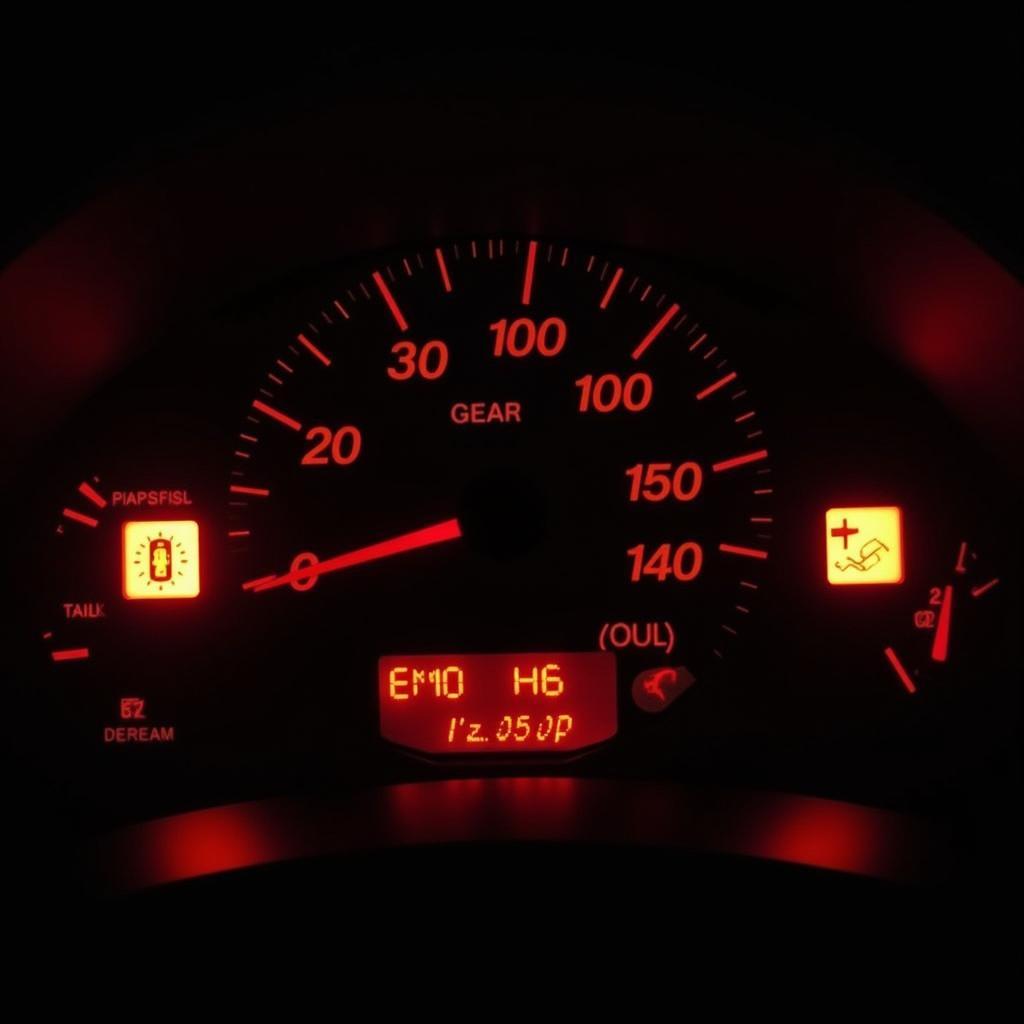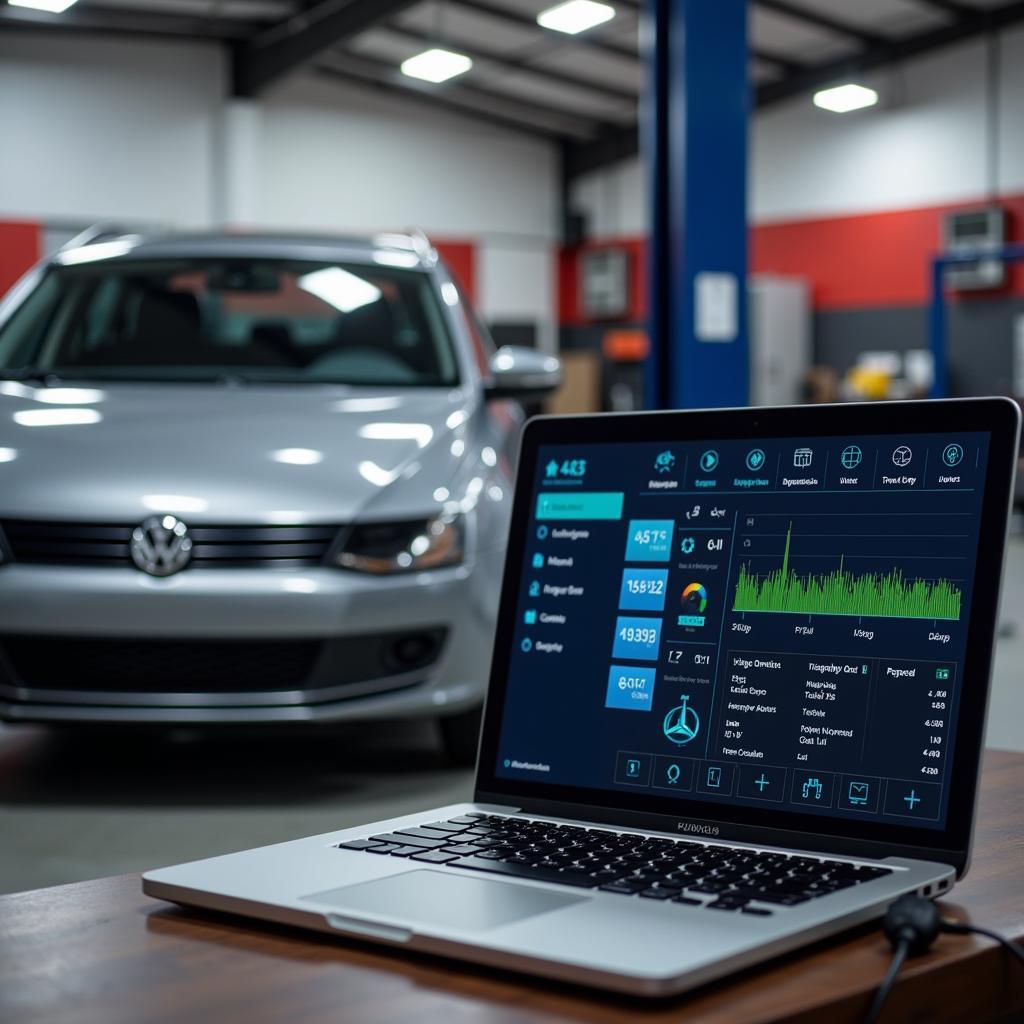Experiencing a car that won’t start after a jump start can be incredibly frustrating. You’ve followed the steps, connected the cables correctly, and yet your engine remains stubbornly silent. This guide delves into the common causes and provides practical solutions to get you back on the road. car wont start with jumper cables It covers everything from diagnosing the problem to implementing remote software solutions for more complex issues.
Common Reasons Your Car Won’t Start After Jumping
Several factors can contribute to this issue, ranging from simple oversights to more serious mechanical problems. Let’s explore some of the most frequent culprits.
Battery Issues
Even after a jump, a severely damaged battery might not hold enough charge to crank the engine. Corrosion on the battery terminals can also impede the flow of electricity.
- Check the terminals: Ensure they are clean and tight.
- Test the battery: Use a multimeter to check the voltage. A reading below 12.6 volts indicates a weak or dead battery.
Faulty Starter
A malfunctioning starter motor is another common culprit. jump starting car not working The starter relies on the battery’s power to turn the engine over. If it’s faulty, the engine won’t start even with a jump.
- Listen for clicking: A clicking sound when you turn the key may indicate a starter problem.
- Test the starter: A qualified technician can test the starter using specialized equipment.
Alternator Problems
The alternator recharges the battery while the engine is running. A failing alternator can drain the battery, making it difficult to start even after a jump.
- Check the alternator belt: Ensure it’s properly tensioned and not damaged.
- Test the alternator: A multimeter can be used to check the alternator’s output voltage.
Advanced Diagnostics and Remote Solutions
Sometimes, the problem lies deeper than a simple battery or starter issue. Modern vehicles rely heavily on complex electronic systems. after jumping a dead battery A software glitch or a faulty sensor can prevent the car from starting. This is where remote diagnostics and programming become invaluable.
Remote Diagnostics
Using specialized software, technicians can access your vehicle’s computer system remotely to pinpoint the exact cause of the problem. This eliminates guesswork and saves valuable time.
Remote Programming and Software Updates
If the issue stems from a software problem, remote programming can provide a quick and efficient solution. Technicians can upload software updates, reprogram modules, and even fix certain electrical issues without physically accessing the vehicle.
“Remote diagnostics and programming are revolutionizing the automotive repair industry,” says John Smith, Senior Automotive Electrical Engineer at AutoTech Solutions. “We can now diagnose and fix problems faster and more effectively than ever before.”
What if the Car Still Won’t Start After a Jump?
If your car not starting after jumping battery persists, even after checking the usual suspects, further investigation is needed. Consider these less common but potential issues:
Fuel System Problems
A clogged fuel filter, a faulty fuel pump, or a lack of fuel can prevent the engine from starting. Check the fuel gauge, listen for the fuel pump engaging when you turn the key, and consider having the fuel system inspected by a professional.
Ignition System Issues
A bad ignition coil, a faulty ignition switch, or damaged spark plugs can also cause starting problems. These components are crucial for igniting the fuel-air mixture in the engine cylinders. Testing these components requires specialized tools and knowledge.
Preventing Future Starting Problems
Once you’ve addressed the current issue, it’s wise to take preventative measures. Regular battery maintenance, like cleaning the terminals and checking the voltage, can significantly extend its lifespan. car battery dead central locking not working Addressing minor issues promptly can prevent them from escalating into major problems down the road.
“Preventative maintenance is key to avoiding costly repairs,” says Jane Doe, Lead Technician at AutoCare Center. “Regular check-ups can identify potential problems early on, saving you time and money in the long run.”
Conclusion
A car not starting after jumping battery can be a complex issue with various underlying causes. By understanding the potential culprits and following the troubleshooting steps outlined above, you can often diagnose and resolve the problem yourself. However, for more complex electronic issues, seeking professional help with remote diagnostics and programming may be the most efficient solution. Don’t let a dead battery keep you stranded – take control and get your car back on the road.
FAQ
-
Could a blown fuse prevent my car from starting after a jump? Yes, a blown fuse related to the starting system could be the culprit. Check your car’s fuse box for any blown fuses.
-
How long should I jump-start my car? Typically, a few minutes is sufficient. Excessive jump-starting can damage both vehicles’ electrical systems.
-
Is it safe to jump-start a car with a different battery voltage? No, always use a battery with the same voltage as your car’s battery.
-
Can extreme temperatures affect my car’s ability to start? Yes, both extreme heat and cold can affect battery performance.
-
How often should I have my car battery tested? It’s a good practice to have your battery tested every six months, especially before winter or summer.
-
What are the signs of a failing alternator? Dim headlights, flickering dashboard lights, and a whining sound from the engine compartment can indicate a failing alternator.
-
Can a bad ground connection prevent my car from starting? Yes, a poor ground connection can interrupt the flow of electricity, preventing the starter from engaging.



